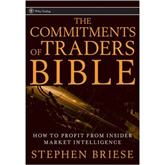
Let’s review the long-term performance of the COT Index in the euro. This is the youngest of the currencies we follow, replacing the Deutchemark on the IMM futures board in January 1999. In most ways, the euro has followed the well-established Deutchemark patterns in terms of COT net positions (along with cycles and other technical studies). We could not assume this at the time, however, and it took a couple of years to build enough data history to have confidence in COT signals. Until 2001, we successfully relied on signals in the Swiss franc, which traded pretty much in lockstep with the euro.
Our first reliable signal in the euro was published on July 16, 2001 (A). The minor buy signal in the euro was accompanied by a major buy signal in the Swissie. The fact that these signals occurred at a prior support level did not escape our attention:
“This is the first time during this bear market that Commercial buying has appeared at the
same price level as at the prior occurrence (last fall). This hints that fundamentals have quit slip
ping in the franc. Traders should watch for confirmation of a potential major bottom”.
This was published just 6 days following the low of the failure swing bottom that triggered the ongoing 6.5 year bull market. In December 2001 we primed subscribers for what we expected to be a long-term trade:
“In a bull market, the longer you hang on, the higher the profits. We got you in very early in the trend and now encourage you to try to stay aboard for the long term. If you get knocked out by a protective stop, we will be watching for re-entry signals.”(B)
We were fortunate to find optimum rebuying points at key retracement lows in August 2003 (C) and April 2004 (D).
But what about the major buy signal in December 2004 (E)? Commercials were buying on a scale up, not at a corrective low. I dare guess that your casual Commitments analyst did not get this one right. Although the signal was unusual it did indicate a sudden change in large trader sentiment, leading us to expect a trend change. The Dec. 13, 2004 Bullish Review carried this advice:
“CURRENCIES NEW SPECIAL SITUATION: …There are an unprecedented number of December contracts to close out or roll over by the last trading day on Friday Dec. 17. We expect major retracements of the 3.5-year trends will develop off this rollover, and would trade a breakout of last week’s high in the dollar index or low in the euro (or other IMM foreign currency we cover).”
That retracement lasted exactly 12 months during which a single short IMM euro contract gained $25,000 (on a correction!). After an initial bout of selling, commercial buying appeared near the bottom of the correction. On Nov. 25, 2005, we noted trader extremes across the currency spectrum (F):
“With Commitments at such historic extremes, we suspect that this dollar bull move [euro pull back] has reached its probable limit. Since the next trend possibilities include a resumption in the dollar bear market, it seems reasonable to lock in long dollar profits. Yen net positions are at a 6.5-year extreme. Franc net positions are at a record extreme. Pound net positions are at 6-year extreme. Commercials are near net long record level in euro.
This was just five days ahead of the resumption of the bull trend that lasted two years and accumulated a $40,000 increase in each long euro contract. The COT Index took on a textbook bull market pattern during this uptrend, with nearly continuous bearish readings reflecting commercial scale up selling. Commercials did buy on corrections, however, providing us exceptionally timely buy signals at October 2006 (G) and August 2007 (H).
The euro appeared to run out of steam in November 2007, consolidating in a 3-month trading range. Was this THE top, or just a resting place in the euro bull market? Commercial buying and a major COT buy signal on February 11 (I) tipped us off to the next bull leg, which has so far accumulated per contract profits totaling $17,000:
“The proximity to the lower trading range boundary makes a low-risk long entry available, in anticipation of an imminent breakout above the upper boundary.” –2/1/2008 Bullish Review
What have we learned from this exercise?
A. COT signals are highly effective in the euro.
B. Play for the big move and try to stay aboard.
C. But major corrections cannot be ignored.
D. Bullish Review is an awesome newsletter.
E. All of the above.

